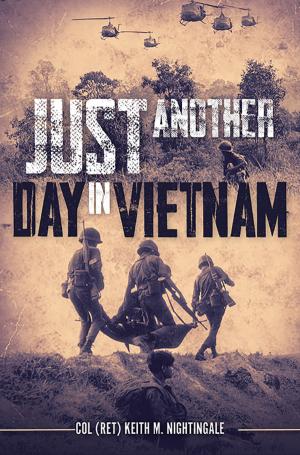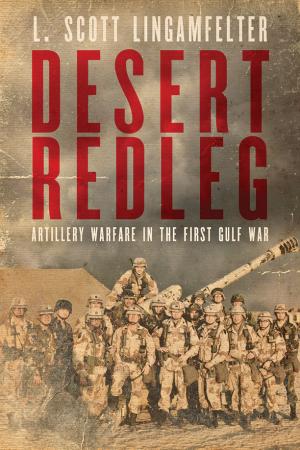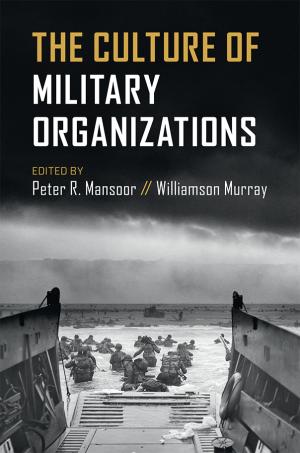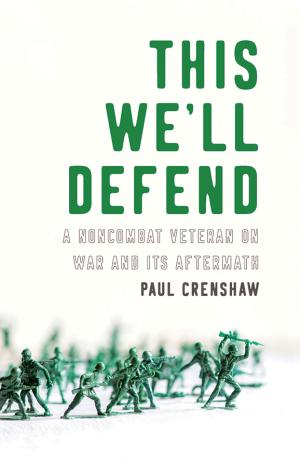June 2020 Book Reviews
June 2020 Book Reviews
Ambushed by Combat’s Personal Complexities
Just Another Day in Vietnam. Col. (Ret.) Keith Nightingale. Casemate Publishers. 264 pages. $34.95
By Lt. Gen. James Dubik, U.S. Army retired
Just Another Day in Vietnam takes the reader into battle—emotionally, psychologically, morally, physically and existentially. Doing so makes it a valuable read. There’s a lot to learn from this book: for the military professional; for citizens who send their brothers and sisters, sons and daughters, husbands and wives to fight on their behalf; and for senior civil and military leaders whose responsibility is to use lives prudently. To say I recommend it is an understatement.
The author, retired Col. Keith Nightingale, focuses on a single battle in the deep recesses of War Zone D, III Corps, South Vietnam, in June 1967—a battle with no name, like so many in that war and most others. He takes readers through the prelude and planning for a battle based on incomplete and intentionally deceitful information, for the plan rested upon the report of a Viet Cong soldier whose well-rehearsed surrender was designed to entice an attack.
Then, through a combination of firsthand memories, interviews and imagination—from both sides—readers experience the resulting ambush. Nightingale’s writing provides gripping lessons in front line leadership. He reminds the reader that combat leadership is both an individual and team activity, that in fighting together leaders and led become one, and that at the point of battle the personal and the tactical merge. Survival and success combine. Strategy is for others.
Just Another Day also educates readers on both the specific realities of a war and the more universal concept of war. Nightingale reveals combat’s multiple dimensions: combatants fight each other, the elements, themselves and chaos. The battle is fought with artillery, mortars and air power; it is also fought hand to hand. What comes through is a vivid understanding of the role of the human spirit and strength of will when what’s at stake is life itself.
The account is riveting, heart-pounding and mind-racing—just as the battle was for those who fought it. The reader comes to see that to succeed in combat requires acting among paradoxes: animal instincts and human rationality, patience and panic, courage and logic, precision and randomness, solitude and camaraderie, silence and cacophony, hard facts and hunches, choice and fatalism, simplicity and intricacy, adrenaline and exhaustion.
None of these are resolved in any kind of harmony. They are lived simultaneously—in this battle and all others, for this is war’s nature. Those who lived and fought in the jungle—the undead and unwounded, as the author calls them—changed; some of those who died became the jungle … literally. This, too, is war.
If I were a battalion commander, I would make this book mandatory reading for all my lieutenants.
Lt. Gen. James Dubik, U.S. Army retired, a former commander of Multi-National Security Transition Command-Iraq, is a senior fellow of the Association of the U.S. Army. He holds a doctorate in philosophy from Johns Hopkins University, Baltimore, and is the author of Just War Reconsidered: Strategy, Ethics, and Theory.
* * *
Big Red One Brings Big Guns to Liberation of Kuwait
Desert Redleg: Artillery Warfare in the First Gulf War. L. Scott Lingamfelter. University Press of Kentucky (An AUSA title). 344 pages. $32.95
By Col. James Scott Wheeler, U.S. Army retired
Desert Redleg: Artillery Warfare in the First Gulf War is a major contribution to the history of the Gulf War of 1990–91. Retired Col. L. Scott Lingamfelter’s memoir of the artillery operations of the 1st Infantry Division is well written, thoughtful and informative. The book’s focus on the artillery aspects of a modern high-intensity conflict is refreshing as it describes the war from the perspective of the artillery forces that contributed to the defeat of Saddam Hussein’s Iraqi forces in Kuwait.
Lingamfelter’s account of the Big Red One’s artillery operations during Operations Desert Shield and Desert Storm is based on the journal he kept during his service as executive officer of the 1st Infantry Division’s Division Artillery (DIVARTY). He further uses interviews and conversations with other division leaders such as Maj. Gen. Thomas Rhame, the division commander, and Col. Mike Dodson, DIVARTY commander.
Lingamfelter paints an interesting picture of the challenging work he and other leaders accomplished to get the division ready for deployment from Fort Riley, Kansas, to Saudi Arabia, and then from the port of Dammam to the northwestern desert where the division launched its attack in late February 1991 into Kuwait.
This is the best account I have read of the tactical operations of a U.S. artillery brigade in modern combat. As executive officer of the DIVARTY, Lingamfelter was responsible for maintenance of the brigade’s equipment and the provision of massive tonnages of fuel and ammunition needed to sustain the artillery brigade during the fast-moving assault against Iraqi forces.
As professional soldiers know, tactics are for amateurs, logistics are for professionals, and this book illustrates the truth of that military saying without detracting from the superb performance of the division’s other formations. Desert Redleg could be used as a textbook for officers in the U.S. Army Command and General Staff College.
Lingamfelter also assesses the tactical and doctrinal lessons of the First Gulf War in his Retrospective and Reality chapter at the end of the book. Overall, AirLand Battle doctrine was vindicated, although there were “ ‘holes’ in the fabric of our doctrine and warfighting systems to support combat operations. Chief among them was logistics,” the book says. U.S. military forces demonstrated a mastery of the joint warfighting doctrine developed by Vietnam War veterans whom Lingamfelter identifies as “warrior architects.” The Cold War Army was more than ready for the challenges it faced in the deserts of Arabia.
The author laments the dismantlement of the U.S. military following the First Gulf War and criticizes the Army’s decision to eliminate artillery brigades from the divisional structure during the ongoing wars in Iraq since 2003. Desert Redleg convincingly demonstrates the powerful contributions divisional artillery brigades make to modern combat.
Fortunately, the Army has restored the artillery brigades, but much still needs to be done to properly restructure the Army so it can operate in a full spectrum of military operations, from high-intensity conflicts to special operations in counterinsurgencies.
Lingamfelter’s analyses of the tactical and doctrinal aspects of the war are solid and well argued. However, his conclusion that President George H.W. Bush’s decision not to have the Army go to Baghdad and depose Saddam is less convincing. He believes that such a move may have prevented the war of 2003 and ensuing quagmire we remain in today. But such “what if” history is unprovable, and the decision to invade Iraq was not connected to the resolution of the First Gulf War in 1991.
Col. James Scott Wheeler, U.S. Army retired, is a retired professor of history at the U.S. Military Academy at West Point, New York. He is the author of several books, including The Big Red One: America’s Legendary 1st Infantry Division from World War I to Desert Storm and Jacob L. Devers: A General’s Life.
* * *
Unique Perspectives on Multifaceted Topic
The Culture of Military Organizations. Edited by Peter Mansoor and Williamson Murray. Cambridge University Press. 482 pages. $32.99
By Col. J.P. Clark
In 1988, historians Williamson Murray and Allan Millett collaborated as editors to produce a still-influential multivolume study of military effectiveness. In the introduction to that series, they identified factors that add to or detract from the effectiveness of military organizations. Yet as Murray, along with new co-editor Peter Mansoor, acknowledges in the introduction to this new book, The Culture of Military Organizations, he and Millett overlooked the “most important” of all the contributors to military effectiveness—organizational culture.
This book redresses that oversight. Perhaps one reason organizational culture was overlooked in the earlier volume is that it is so difficult to precisely define. It is therefore useful that, in addition to the editors’ introduction and conclusion, this volume features two conceptual chapters to help frame the case studies.
In a chapter on organizational culture, Leonard Wong and Stephen Gerras take insights from the field of organizational psychology and apply them to the military. This is followed by David Kilcullen’s discussion of strategic culture, a concept that has proven controversial since its introduction by Rand Corp. analyst Jack Snyder in 1977. Collectively, these four segments provide an array of conceptual tools for academics and military professionals to apply to the subject.
But it is the 16 case studies that form the heart of The Culture of Military Organizations. The editors assembled a strong roster of contributors; there are no weak chapters as sometimes occurs in such works. Though the quality is uniformly good, the great strength of the cases is their diversity. There is a temporal balance with the late 19th, early and late 20th centuries represented in roughly equivalent parts.
These samples skew toward land forces—11 are armies—and the volume does better in drawing from other regions than much of the existing literature, which privileges Western militaries. Chapters on the Israel Defense Forces and the Indian, Imperial Japanese, Soviet and Iraqi armies provide additional cases beyond the typical fare of American, British and German examples with which many professional readers are familiar.
Yet even in chapters on those topics, most of the contributors offer some unique perspective rather than rehashing conventional wisdom. For instance, the early German army is typically seen solely as an extension of the pre-unification Prussian army. Jorit Wintjes examines the more complex process of dozens of armies from across the German Confederation coming together.
There is also diversity in how the contributors approach the subject. Some focus on the role of individual leaders, such as Wayne Wei-Siang Hsieh on Ulysses Grant and the Army of the Tennessee, and David Stubbs on Hugh Trenchard and the Royal Air Force. Others focus on institutional history and how internal forces shaped organizational culture, such as Daniel Marston on the Indian army (1900–47) and Gil-li Vardi on the Israel Defense Forces. And still others draw more heavily on the interplay of national and military culture, such as Richard Hart Sinnreich on the Victorian British Army and David Hunter-Chester on the Imperial Japanese Army.
That these differing approaches provide insight into military culture suggests the extent to which the topic is multifaceted and defies easy categorization. This volume advances a burgeoning field of military and academic study but not so definitively as to close the field. There is still much thinking to be done.
Col. J.P. Clark is an Army strategist. He is the author of Preparing for War: The Emergence of the Modern U.S. Army, 1815–1917.
* * *
Soldier Bares Some Unpleasant Truths
This We’ll Defend: A Noncombat Veteran on War and Its Aftermath. Paul Crenshaw. University of North Carolina Press. 208 pages. $18
By Kayla Williams
Paul Crenshaw subtitles his volume of essays This We’ll Defend with what feels like a caveat: A Noncombat Veteran on War and Its Aftermath. He owns the veteran label to add authenticity to his thoughts on our nation’s love affair with war, then unnecessarily tries to deflect potential criticism of lack of direct combat experience. Complex intertwining of a deep personal and familial connection to our armed forces with profound reservations about the meaning of military service pervade this slim volume.
Crenshaw served for five years in the Army National Guard, finishing basic combat training shortly before the First Gulf War. Many of the essays dwell in excruciating detail on the minutia of basic training and the early years of adulthood that follow, thematically delving into various topics. He revisits discrete moments repeatedly, returning to childhood scenes of melting plastic Army men with his brother, being afraid at basic training, and getting drunk in college while watching TV broadcasts of the First Gulf War.
I respect Crenshaw’s willingness to bare unpleasant truths about himself. He admits to gleefully laughing about cadences glorifying murder, lying about wanting to go to war, falsely accepting accolades from civilians who assumed he was returning from Kuwait, and other youthful indiscretions. Crenshaw admirably lays bare dishonorable acts by his young self so we can examine the ugliness within him and use them to interrogate what it means to be a man, the process of becoming a soldier and what is acceptable in those we send to war.
Less laudable are the many times he makes incorrect assumptions that are easily fact-checked. For example, his “best guess” is that fellow recruits with multiple no-goes were eventually recycled because “the military does not like to release those who have sworn in,” when, in fact, over 13% washed out of basic training when Crenshaw went through it. He speculates about flag-draped bodies coming home on “some anonymous tarmac” and an imagined mother who “woke to a ringing phone”—but the tarmac is famously at Dover Air Force Base, Delaware, and such notifications are always made in person.
Crenshaw haltingly questions the underpinnings of the stories we tell ourselves about our military—and the stories we leave out—but only tentatively brushes up against existential doubts rather than plumbing their depths.
There are lyrical passages and heart-rending paragraphs; the most gutting is when he reflects on the Sandy Hook Elementary School shooting by imagining a massacre in his teacher wife’s kindergarten classroom. In addition, Crenshaw excellently captures the way in which service is becoming a “family business” by weaving together the threads of his own service with those of his father, stepfather and grandfather.
The insight Crenshaw offers into the baser instincts of young military men is raw and unflinching. This a valuable read for those who will lead such troops, either in garrison or on the complex battlefields of today. This book also raises important questions for all of us about the nature of our militarized society.
Kayla Williams is a senior fellow and director of the Military, Veterans, and Society Program at the Center for a New American Security. She is the author of Love My Rifle More Than You: Young and Female in the U.S. Army.





